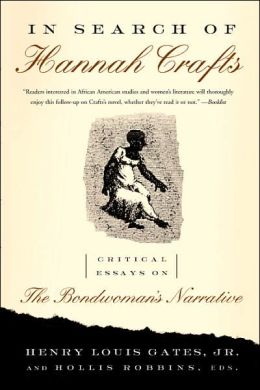What makes this particular narrative special is that it is a novel, the only novel we know of at this time, written by an escaped slave herself, about slavery and the lives of the variety of slaves commonly living on a southern plantation, that was owned by a wealthy, powerful secessionist, John H. Wheeler.
Among other career moves, in the 1850's Wheeler facilitated his friend, William Walker's filibusters in Nicaragua -- the second one concluded with Walker's execution, and Wheeler fleeing to the U.S. Wheeler was a member of his good friend Buchanan's administration. He occupied more than one high position in Jefferson Davis's abortive administration of the CSA. He is the author of Historical Sketches of North Carolina from 1854 to 1851; early in the Introduction, Wheeler, tellingly, for a secessionist, quotes Walter Scott. Published originally in 1851, it was republished in 1925 as part of the New York Confederate Carpetbagger literary movement that flogged the Glorious Lost Cause and whitewashed slavery out of the Civil War.
More to the point is that man who was able to compile a history and write a book, who references Sallust and Scott, would have a large library and have on hand ample paper and ink. This means a house slave such as Hannah Bond was, would have access to both books and writing supplies. If we are honest, this would not be the case in most planters' mansions, for whom writing and study were low on their list of preferred leisure activities.
Merely knowing, then, who was the owner of The Bondwoman's Narrative's author, provides all sorts of information for an historian. That this information comes to us from a slave's perspective is so rare as to be non-existant.
Only this year has the identity of the author been definitively tracked down and authenticated.
As described in the New York Times last month, here are the details of the conclusion of that quest to discover and authentic the identity of the author of The Bondwoman's Narrative. This quest to uncover Hannah Crafts's identity was embarked upon by Henry Louis Gates after he bought the manuscript at an obscure auction in 2001. In his edition of the novel Gates details the frustration of dead end twists and turns of his own failure to learn who Hannah Crafts really was.
From the NY Times description of Bond's novel:
The book, whose language borrows from 19th-century Gothic novels, traces the story of its narrator, who endures life as a slave on a North Carolina plantation and, aided by her light complexion, successfully escapes to the North.
That tale closely mirrors the story of Bond. Enslaved on a plantation in Murfreesboro, N.C., Bond is believed to have been a self-educated woman who worked as a maid to the mistress of the house, Ellen Wheeler, assisting her with errands and personal duties, like styling her hair.
But around 1857, Bond disguised herself as a boy and escaped, fleeing first to upstate New York and then to New Jersey, where she eventually married and found work as a schoolteacher.Beyond the interest The Bondwoman's Tale provides to an historian, due to the Victorian fiction models Bond employs, from the Brontean Gothic to Dickens's social commentary, the tale itself is an exciting one.
Most affecting in some ways for this reader, is the awareness that this novel was never published in Bond's own lifetime. For years after its discovery scholars doubted that it was written by an escaped slave at all, due to the literary references and high degree of skill in both handwriting and composition. Yet, finally, here it is, for the world to read, complete with the knowledge that Hannah Bond is the author.



No comments:
Post a Comment